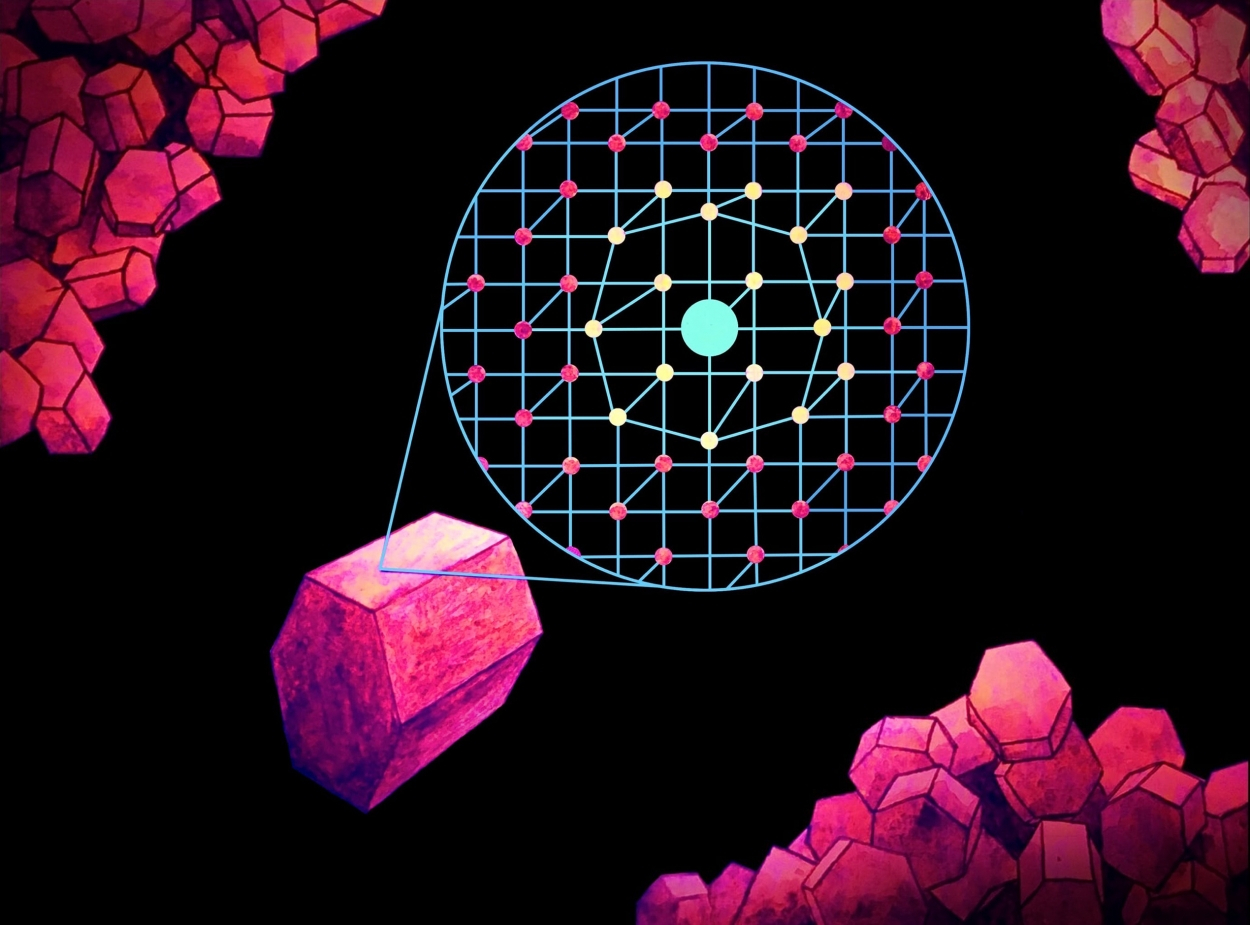New fluorescent nanoparticles to contribute to medical diagnostic testing with contrast

Scientists at St Petersburg University, LAT University (Finland) and Sirius University have synthesised new fluorescent nanoparticles based on the fluorides of rare earth elements - yttrium and europium with addition of gadolinium ions. Potentially, they can be used in laser microscopy and in diagnostics of various diseases with the use of contrast. The article describing the synthesised phosphor was published in The New Journal of Chemistry published by the Royal Society of Chemistry. The research results appeared on the journal cover.
Phosphors are substances that can radiate light when exposed to UV rays, electromagnetic field or a different disturbing action. Today, these materials are used in lamps and LEDs (for example, in electric appliances of everyday use), evacuation and fire alarm systems. They are also used to produce paints and pigments, secure value documents, and conduct medical research. Thus, the synthesised substance will allow for magnetic resonance tomography and fluorescence microscopy to be performed simultaneously, which will speed up the diagnostics.
Recently, among various fluorescent materials, researchers have paid particular attention to nanocrystalline non-organic phosphors based on the composites of rare earth elements. For this purpose, the NaYF4 composites are mostly used, since the material itself only slightly reduces the luminescence of the dopded ions.
St Petersburg University scientists replaced the ions of yttrium (Y) with the ions of europium (Eu) and gadolinium (Gd) and studied the way it affects the size of nanoparticles as well as the substance emission properties. Based on the experimental results, the optimum europium doping concentration in the composite is 30%, since exactly this amount of substance provides for the maximal emission intensity. However, luminescence intensity can still be increased. To do so, additionally a small amount of yttrium ions should be replaced by gadolinium, while keeping the concentration of europium unchanged. Despite the fact that gadolinium ions show almost no luminescence, they significantly increase the brightness of the substance luminosity.
To achieve this result, scientists synthesise the particles with the ions of yttrium, europium and gadolinium in an autoclave – a chemical reactor that elevates the temperature of substances under pressure above atmospheric. Chemists gradually add citric acid, sodium hydroxide and a mixture of ammonium fluoride and sodium hydroxide to water solutions of yttrium, europium and gadolinium chlorides. Then, the resulted solution is held in an autoclave for 24 hours at the temperature of 180°C. This method allows to get the final substance with improved luminescence properties.
‘We have found out that by adding only 1% of gadolinium, we can enhance the luminescence intensity by 2.5 times. A decrease in symmetry leads to an increase in luminescence properties of lanthanides that include the three utilised rare earth elements. Probably, the replacement of yttrium ions with larger gadolinium ions causes structural defects that reduce the symmetry and, consequently, enhance luminescence making the substance emission brighter,’ says Andrey Mereshchenko, a co-author of the research, Associate Professor in the Department of Laser Chemistry at St Petersburg University.
During the research, the University chemists also found out that the replacement of yttrium ions by gadolinium and europium ions causes the size reduction of synthesised particles. This simplifies further use of the substance for medical purposes. The images below demonstrate the dependence of the size on the content of europium. These images were obtained by an electronic microscope at Interdisciplinary Resource Centre for Nanotechnology at the St Petersburg University Research Park.
‘We assume that a decrease in the size of particles is related to the crystal-growth rate. Gadolinium and europium ions have a larger radius than yttrium ions. Thus, the surface positive charge density of the particles containing europium and gadolinium is lower. For this reason, the charged fluoride ions are less attracted to such particles, and they grow slower,’ clarified Andrey Mereshchenko.
In photobiology and biomedicine, bioparticles based on NaYF4 in combination with other rare earth ions are widely used due to low toxicity of the material and ability to penetrate into the tissues because of its small size (unites and tens of nanometres). Thus, gadolinium with its magnetic properties is currently used to design contrast agents for magnetic resonance therapy. Fluorescent nanoparticles with europium ions are used as markers of different diseases to examine biological tissues with the help of fluorescence microscopy. A new phosphor designed by the University scientists enables specialists to perform two types of diagnostics simultaneously – with the help of light and magnetic field, which significantly increases the efficiency of the search.
‘We have to modify our particles by making them more sensitive to certain viruses and cells. Then, we can perform diagnostics, for example, by looking for cancer cells in the human body. We can take samples of cells or tissues and examine them by means of fluorescent microscope. Europium will light up those areas where the particles ‘preconfigured’ to look for cancerous tumour have arrived. The use of magnetic resonance therapy in a living organism will allow to detect a tumour, since the nanoparticles with magnetic gadolinium ions will concentrate there. Thus, by introducing one functional element we can perform two independent tests at the same time. This is the practical application of our substance,’ explains Andrey Mereshchenko.
In further research, ions in the composite can be partially replaced with radioactive ions and be used in the treatment of cancer. Apart from medicine, these materials can be applied in developing fluorescent paints to safeguard documents, money and securities, where especially bright luminescence is required.

